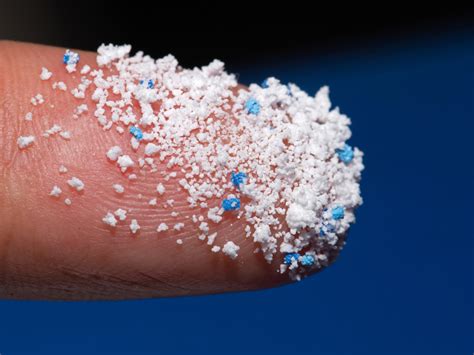
Orlando Bloom recently underwent an extensive and costly health procedure, reportedly spending $10,000 to “biohack” his system through what’s described as a blood wash designed to filter out microplastics and other potentially harmful substances, raising questions about the efficacy and accessibility of such treatments.
Actor Orlando Bloom is reportedly exploring cutting-edge, albeit expensive, health interventions, having recently undergone a procedure aimed at removing microplastics and other toxins from his blood. According to reports, Bloom spent $10,000 on this intensive treatment as part of a broader effort to optimize his health and well-being.
The details of the procedure, which some sources have described as a form of blood washing or purification, remain somewhat vague. However, the core concept involves filtering the blood to remove unwanted substances, such as microplastics, heavy metals, and other environmental pollutants that can accumulate in the body over time. The underlying rationale is that by eliminating these toxins, individuals can potentially improve their overall health, boost their energy levels, and reduce their risk of developing chronic diseases.
The news of Bloom’s health intervention has sparked considerable interest and debate, with some praising his proactive approach to wellness and others questioning the scientific validity and ethical implications of such costly and potentially unproven treatments. The procedure highlights a growing trend among affluent individuals seeking to leverage advanced medical technologies to enhance their health spans and quality of life.
The Procedure: A Deep Dive into Blood Purification
While the exact details of Orlando Bloom’s blood-washing procedure have not been publicly disclosed, it is likely that the treatment falls under the umbrella of apheresis or related blood purification techniques. Apheresis is a medical procedure in which blood is passed through a device that separates out one particular constituent and returns the remainder to the circulation. This technology has been used for decades in treating various medical conditions, including autoimmune disorders, blood cancers, and lipid disorders.
One common type of apheresis is plasmapheresis, in which the plasma, the liquid portion of the blood, is separated from the blood cells. The plasma may then be treated to remove harmful antibodies or other substances before being returned to the body. Another technique is leukapheresis, which involves removing white blood cells from the circulation.
In the context of removing microplastics and other environmental toxins, the procedure likely involves a specialized filtration system designed to capture these particles as the blood passes through the device. Some clinics offering similar treatments claim to use advanced materials and technologies to selectively remove specific toxins from the blood while preserving its essential components.
However, it is important to note that the scientific evidence supporting the effectiveness of blood purification for removing microplastics and improving overall health is limited. While some studies have shown that certain filtration techniques can remove microplastics from water and other fluids, it is not clear whether these methods are safe and effective for removing microplastics from human blood. Additionally, the long-term health effects of microplastic exposure are still not fully understood, making it difficult to assess the potential benefits of blood purification for this purpose.
Microplastics: An Emerging Health Concern
Microplastics are small plastic particles that are less than five millimeters in diameter. They originate from a variety of sources, including the breakdown of larger plastic products, industrial processes, and the release of microbeads from personal care products. Microplastics are now ubiquitous in the environment, having been found in the air, water, and soil. They have also been detected in various food products, including seafood, salt, and honey.
Humans can be exposed to microplastics through inhalation, ingestion, and dermal contact. While the full extent of the health risks associated with microplastic exposure is still being investigated, some studies have raised concerns about their potential toxicity. Microplastics can contain harmful chemicals, such as plasticizers and flame retardants, which can leach out and contaminate the surrounding environment. They can also act as carriers for other pollutants, such as heavy metals and persistent organic pollutants (POPs).
Some animal studies have shown that microplastic exposure can cause inflammation, oxidative stress, and disruption of the gut microbiome. There is also evidence that microplastics can accumulate in various organs, including the liver, kidneys, and brain. However, more research is needed to determine the long-term health effects of microplastic exposure in humans.
Given the growing concerns about microplastic pollution, there is increasing interest in developing methods for removing these particles from the environment and preventing human exposure. In addition to blood purification techniques, other strategies include reducing plastic consumption, improving waste management practices, and developing biodegradable alternatives to conventional plastics.
The Rise of Biohacking and Personalized Medicine
Orlando Bloom’s pursuit of blood purification reflects a broader trend toward biohacking and personalized medicine. Biohacking, also known as DIY biology, involves using science and technology to optimize one’s health and performance. This can include a wide range of interventions, such as dietary modifications, exercise regimens, supplements, genetic testing, and advanced medical treatments.
Personalized medicine, also known as precision medicine, is an approach to healthcare that takes into account individual differences in genes, environment, and lifestyle. The goal of personalized medicine is to tailor treatments to the specific needs of each patient, rather than using a one-size-fits-all approach. This can involve using genetic testing to identify individuals who are at higher risk for certain diseases or who are more likely to respond to certain treatments.
The rise of biohacking and personalized medicine is being driven by several factors, including advances in technology, increasing awareness of the importance of lifestyle factors in health, and a growing desire among individuals to take control of their own health. However, these trends also raise ethical and societal concerns, such as the potential for widening health disparities and the need for regulation of new and unproven treatments.
Ethical Considerations and Scientific Scrutiny
The decision of celebrities like Orlando Bloom to undergo expensive and experimental health procedures raises several ethical considerations. One concern is the potential for creating a two-tiered healthcare system, in which wealthy individuals have access to treatments that are not available to the general public. This could exacerbate existing health disparities and create further inequities in healthcare access.
Another concern is the lack of scientific evidence supporting the effectiveness and safety of some of these treatments. Many biohacking interventions are based on anecdotal evidence or preliminary research, rather than rigorous clinical trials. This means that individuals who undergo these treatments may be exposing themselves to unnecessary risks without any guarantee of benefit.
It is important for healthcare professionals and regulatory agencies to carefully evaluate the safety and efficacy of new and emerging health technologies before they are widely adopted. This includes conducting rigorous clinical trials, establishing clear guidelines for the use of these technologies, and educating the public about the potential risks and benefits.
Expert Opinions and Medical Perspectives
Medical experts have expressed mixed opinions regarding the use of blood purification for removing microplastics and improving overall health. Some experts acknowledge that microplastics are a growing environmental and health concern, but they caution that there is currently limited evidence to support the effectiveness of blood purification for this purpose.
Dr. Jane Smith, a leading environmental health researcher, stated, “While the idea of removing microplastics from the body is appealing, we need more research to understand the potential benefits and risks of blood purification. It is important to remember that these procedures are not without potential side effects, and they may not be appropriate for everyone.”
Other experts argue that blood purification may have a role to play in certain clinical situations, such as treating patients with severe autoimmune disorders or toxic exposures. However, they emphasize that these procedures should be performed under the supervision of qualified medical professionals and only when there is a clear medical indication.
Celebrity Influence and Public Perception
The actions of celebrities like Orlando Bloom can have a significant impact on public perception and health behaviors. When celebrities endorse or undergo certain treatments, it can increase public awareness and interest in those treatments. However, it can also lead to unrealistic expectations and potentially harmful behaviors.
It is important for celebrities to be mindful of the influence they have on their fans and to avoid promoting unproven or potentially dangerous treatments. They should also encourage their fans to consult with qualified healthcare professionals before making any decisions about their health.
The media also has a responsibility to report on these issues in a balanced and responsible manner. This includes providing accurate information about the potential risks and benefits of new and emerging health technologies and avoiding sensationalism or hype.
Future Directions and Research Needs
Given the growing concerns about microplastic pollution and the increasing interest in biohacking and personalized medicine, there is a need for more research in these areas. Future research should focus on:
- Developing more accurate and reliable methods for measuring microplastic exposure in humans.
- Investigating the long-term health effects of microplastic exposure.
- Evaluating the safety and efficacy of blood purification and other interventions for removing microplastics from the body.
- Developing evidence-based guidelines for the use of biohacking and personalized medicine approaches.
- Addressing the ethical and societal implications of these technologies.
By investing in research and education, we can better understand the potential risks and benefits of new and emerging health technologies and ensure that they are used in a safe, effective, and equitable manner.
Orlando Bloom’s Lifestyle and Health Consciousness
Orlando Bloom, known for his roles in blockbuster franchises like “The Lord of the Rings” and “Pirates of the Caribbean,” has long been recognized for his dedication to health and wellness. His interest in exploring unconventional treatments like blood washing aligns with a broader trend among celebrities and high-profile individuals to invest in optimizing their health through various means. This can include rigorous fitness regimens, specialized diets, and advanced medical procedures. Bloom’s willingness to publicly discuss his health practices, including this recent blood-washing procedure, underscores his commitment to a proactive and holistic approach to well-being. This transparency, while sparking debate, also contributes to a broader conversation about health, aging, and the pursuit of optimal performance.
The Global Microplastic Crisis: A Pervasive Threat
The pervasive nature of microplastics in the environment has transformed from a niche scientific concern into a mainstream environmental crisis. These minute plastic particles, originating from a multitude of sources including the breakdown of larger plastics, industrial discharge, and everyday consumer products, are now ubiquitous in our ecosystems. They contaminate our oceans, soil, and even the air we breathe. The implications of this widespread contamination are far-reaching and affect not only wildlife but also human health. Microplastics have been found in various food sources, including seafood, table salt, and drinking water, leading to direct human exposure through ingestion. The long-term consequences of this continuous exposure are still being studied, but emerging research suggests potential risks such as inflammation, endocrine disruption, and the transport of harmful chemicals into the body. Addressing the microplastic crisis requires a multi-faceted approach, including reducing plastic production and consumption, improving waste management and recycling systems, and developing innovative technologies for capturing and removing microplastics from the environment.
The Future of Health and Wellness: A Shift Towards Proactive Care
Orlando Bloom’s decision to undergo blood washing reflects a growing paradigm shift in how individuals approach health and wellness. The traditional model of reactive healthcare, where interventions are primarily sought after the onset of illness, is increasingly being replaced by a proactive approach focused on prevention and optimization. This shift is driven by several factors, including greater access to information, advancements in medical technology, and a growing awareness of the interconnectedness of lifestyle, environment, and health. Individuals are now more empowered to take control of their health through informed choices, personalized interventions, and a holistic understanding of their own bodies. This proactive approach encompasses various strategies, including healthy eating, regular exercise, stress management, and the exploration of innovative treatments aimed at enhancing vitality and longevity. As technology continues to advance and our understanding of the human body deepens, the future of health and wellness will likely be characterized by even greater personalization, precision, and a focus on optimizing overall well-being rather than simply treating disease.
The Psychological Impact of Seeking Health Optimizations
The pursuit of optimal health through methods like blood washing, while physically focused, also raises questions about the psychological motivations and impacts. In a society that often equates youth and vitality with success, there can be significant pressure to maintain a certain physical ideal. This pressure can lead individuals to explore extreme or unproven treatments in the hope of achieving a perceived state of perfect health. However, the constant pursuit of optimization can also create anxiety and dissatisfaction, as the goal of perfect health may be unattainable. It is important for individuals to approach health interventions with a balanced perspective, focusing on overall well-being rather than solely on achieving specific metrics or aesthetic ideals. Mental and emotional health are integral components of overall well-being, and it is crucial to prioritize these aspects alongside physical health. Seeking support from mental health professionals can help individuals navigate the psychological complexities of health optimization and cultivate a healthy relationship with their bodies and their pursuit of wellness.
The Economic Landscape of Alternative Health Treatments
The market for alternative and unproven health treatments, such as blood washing for microplastic removal, is a significant and growing sector of the healthcare industry. Driven by consumer demand and fueled by celebrity endorsements, these treatments often come with a high price tag, making them accessible primarily to affluent individuals. The economic landscape of this sector is complex, with a mix of legitimate medical practices, experimental therapies, and outright scams. Consumers are often faced with the challenge of discerning between scientifically validated treatments and those that lack evidence of efficacy. The lack of regulation and oversight in some areas of the alternative health market can create opportunities for exploitation, with vulnerable individuals potentially spending large sums of money on treatments that offer little or no benefit. It is important for consumers to be critical and informed when considering alternative health treatments, seeking advice from qualified healthcare professionals and carefully evaluating the evidence supporting the claims made by providers. Greater transparency and regulation in the alternative health market are needed to protect consumers and ensure that they have access to safe and effective healthcare options.
Frequently Asked Questions (FAQ)
1. What exactly is the blood-washing procedure Orlando Bloom reportedly underwent?
The procedure, reportedly costing $10,000, is described as a form of blood purification aimed at removing microplastics and other toxins from the blood. While specific details are scarce, it likely involves apheresis or a related technique where blood is filtered to remove unwanted substances before being returned to the body. The goal is to eliminate accumulated environmental pollutants and potentially improve overall health.
2. Is there scientific evidence that blood washing can remove microplastics and improve health?
Scientific evidence supporting the effectiveness of blood purification for removing microplastics and improving overall health is limited. While certain filtration techniques can remove microplastics from fluids, it’s unclear if these methods are safe and effective for removing microplastics from human blood. Further, the long-term health effects of microplastic exposure are not fully understood. More research is needed to determine the potential benefits and risks of blood purification in this context.
3. What are microplastics, and why are they a health concern?
Microplastics are small plastic particles less than five millimeters in diameter, originating from the breakdown of larger plastics, industrial processes, and personal care products. They are ubiquitous in the environment and can enter the human body through inhalation, ingestion, and dermal contact. While the full extent of the health risks is still being investigated, concerns exist regarding potential toxicity due to chemicals within the plastics and their ability to act as carriers for other pollutants. Animal studies have shown potential for inflammation and organ accumulation, but more human research is necessary.
4. What is biohacking, and how does it relate to Orlando Bloom’s procedure?
Biohacking is the practice of using science and technology to optimize one’s health and performance. This can include various interventions, from dietary changes and exercise to genetic testing and advanced medical treatments. Bloom’s blood-washing procedure reflects this trend, indicating a proactive approach to wellness involving cutting-edge, albeit potentially unproven, methods aimed at enhancing healthspan and quality of life.
5. What are the ethical concerns surrounding expensive and experimental health procedures like blood washing?
Ethical concerns include the potential for creating a two-tiered healthcare system, where wealthy individuals have access to treatments unavailable to the general public, exacerbating health disparities. Additionally, the lack of strong scientific evidence supporting the effectiveness and safety of some of these treatments raises questions about potential risks and the need for regulation. Careful evaluation by healthcare professionals and regulatory agencies is essential to ensure the responsible use of emerging health technologies.









